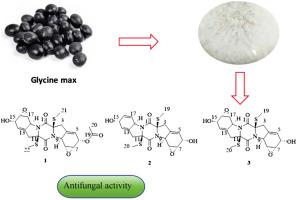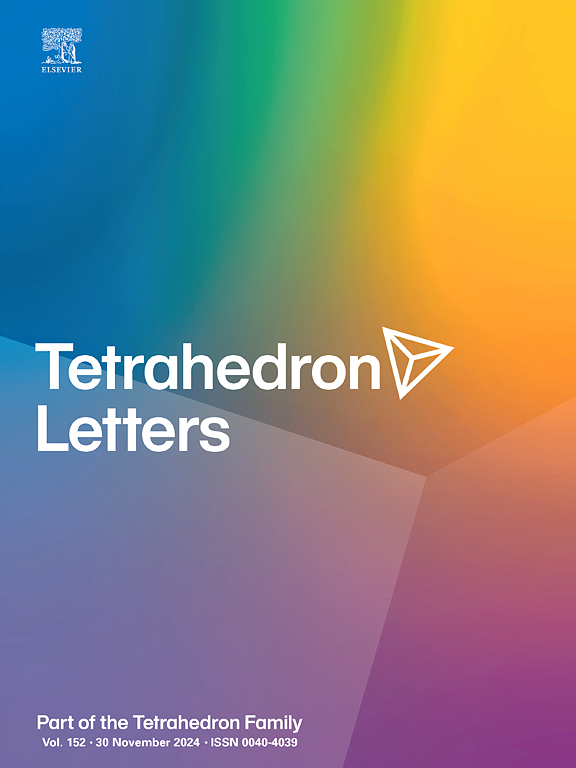从马来蓟马中分离到两种新的真菌生物碱及其生物活性
IF 1.5
4区 化学
Q3 CHEMISTRY, ORGANIC
引用次数: 0
摘要
从内生真菌Arthrinium malaysianum DD-1中分离到两个新的真菌生物碱arthriniumperazine A(1)和arthriniumperazine B(2),以及已知的mycoediketopiperazine(3)。值得注意的是,这类真菌生物碱的报道很少,只有化合物3在文献中被记录。通过1H/13C NMR和HR-ESI-MS等综合波谱分析对1和2的平面结构进行了鉴定。它们的绝对构型是通过比较ECD计算明确确定的。在生物活性试验中,化合物2表现出较弱的α-葡萄糖苷酶抑制活性(18.95±3.77%,n = 3)。化合物1对枯草芽孢杆菌、金黄色葡萄球菌和大肠杆菌具有广谱抗菌活性,mic均为26.60 μg/mL。化合物2对大肠杆菌(26.60 μg/mL)和金黄色葡萄球菌(26.60 μg/mL)有选择性抑制作用,对枯草芽孢杆菌无明显抑制作用。本文章由计算机程序翻译,如有差异,请以英文原文为准。

Two novel fungal alkaloids were isolated from Arthrinium malaysianum and their bioactivities
Two new fungal alkaloids, arthriniumperazine A (1) and arthriniumperazine B (2), along with the known mycoediketopiperazine (3), were isolated from the endophytic fungus Arthrinium malaysianum DD-1. Notably, this class of fungal alkaloids is scarcely reported, with only compound 3 being previously documented in the literature. The planar structures of 1 and 2 were elucidated through comprehensive spectroscopic analyses, including 1H/13C NMR and HR-ESI-MS. Their absolute configurations were unambiguously determined by comparative ECD calculations. In bioactivity assays, compound 2 exhibited weak α-glucosidase inhibitory activity (18.95 ± 3.77 %, n = 3). For antimicrobial evaluation, compound 1 showed broad-spectrum activity with consistent MICs of 26.60 μg/mL against Bacillus subtilis, Staphylococcus aureus, and Escherichia coli. Compound 2 exhibited selective inhibitory effects against Escherichia coli (26.60 μg/mL) and Staphylococcus aureus (26.60 μg/mL) in the broth microdilution assay, while displaying no significant inhibition against Bacillus subtilis.
求助全文
通过发布文献求助,成功后即可免费获取论文全文。
去求助
来源期刊

Tetrahedron Letters
化学-有机化学
CiteScore
3.50
自引率
5.60%
发文量
521
审稿时长
28 days
期刊介绍:
Tetrahedron Letters provides maximum dissemination of outstanding developments in organic chemistry. The journal is published weekly and covers developments in techniques, structures, methods and conclusions in experimental and theoretical organic chemistry. Rapid publication of timely and significant research results enables researchers from all over the world to transmit quickly their new contributions to large, international audiences.
 求助内容:
求助内容: 应助结果提醒方式:
应助结果提醒方式:


